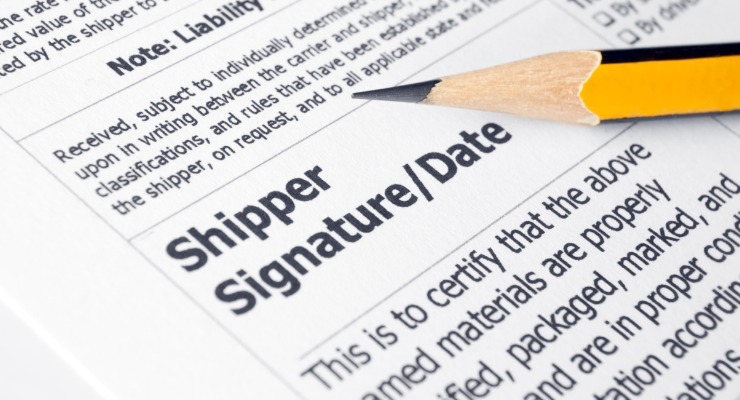
Shipping is complex and the documents that go with it can be even more difficult to understand. You may be familiar with the Bill of Lading, however a Telex Release may sound like something that was superseded years ago. While the Telex Release process has changed over the years, the name has stuck. So, let us explain the documents and their relationship to each other.
What is an Express Bill of Lading?
A Bill of Lading (or BoL) is a legal document that is used to detail all the particulars of the cargo – the buyer, description of goods, container number, port of origin, and port of destination. There are usually three Bills of Lading produced to ensure that there is one available for the shipper, one for the consignee, and one for the broker, freight forwarding service or third party. However, in some cases there may be more than three copies. The exporter must send the Bill of Lading to the importer/buyer for them to collect the goods.
An Express Release Bill of Lading is an electronic copy that has been deemed sufficient for the carrier at the final destination to release the cargo to the final consignee stated in the Bill of Lading. If the Bill of Lading isn’t Express Release, the original documents must be mailed/couriered to the buyer so they can present at the time of collection. In short, using an Express Bill of Lading saves time and money. After import custom clearance, the buyer shows the necessary identification and the cargo is provided to them.
A Bill of Lading may be used for any kind of shipment; land, air and ocean freight. When it comes to air freight, a Bill of Lading can also be called an Air Waybill.
What is a Telex Release?
A Telex Release is a document that is used to authorise the release of cargo at one port after the Bill of Lading document has been surrendered at the other port. This means that both the Bill of Lading and Telex Release documents are required where the cargo is being released at a port different to the one that the original Bill of Lading was surrendered at. However, the carrier is required to collect the original Bill of Lading before any cargo is released. The bills are usually surrendered by the shipper or forwarded to a port agent (often at the port of loading). The bill includes instructions on releasing the goods to the consignee or named party.
The agent then sends a Telex Release to the discharge port agent to advise they have received the full set of three original Bills of Lading. The Telex Release is also confirmation that freight and all other charges have been paid at the port of loading. The release should include all cargo details such as name and address of consignee or named party, the container number and a detailed description of the goods.
If the Telex Release is complete and unambiguous, the goods may then be released to the consignee or named party. Despite the name, the document is usually sent by email rather than through Telex Release.
Positives and Negatives of Electronic Communication
Telex Release and Express Release Bill of Lading documents are ideal because they can help to speed up the customs clearance process and eliminate the cost of sending hard copy documentation to the buyer. However, they do come with some risks. There have been cases where a fake Telex Release was sent, allowing goods to be collected unlawfully. To help lower the risk, ports are advised to check the authenticity of a Telex Release or Express Release Bill of Lading. This can be done through entering the port’s email address and returning a copy of the original documents back to them, as well as asking for verification that they sent the original communication.
Instructions for the goods should also be clear so the receiving port knows whether the goods are due to be collected or they’re continuing on to another port. Language differences between ports can cause communications problems. If there are any doubts about the instructions, the port should check before releasing the goods.